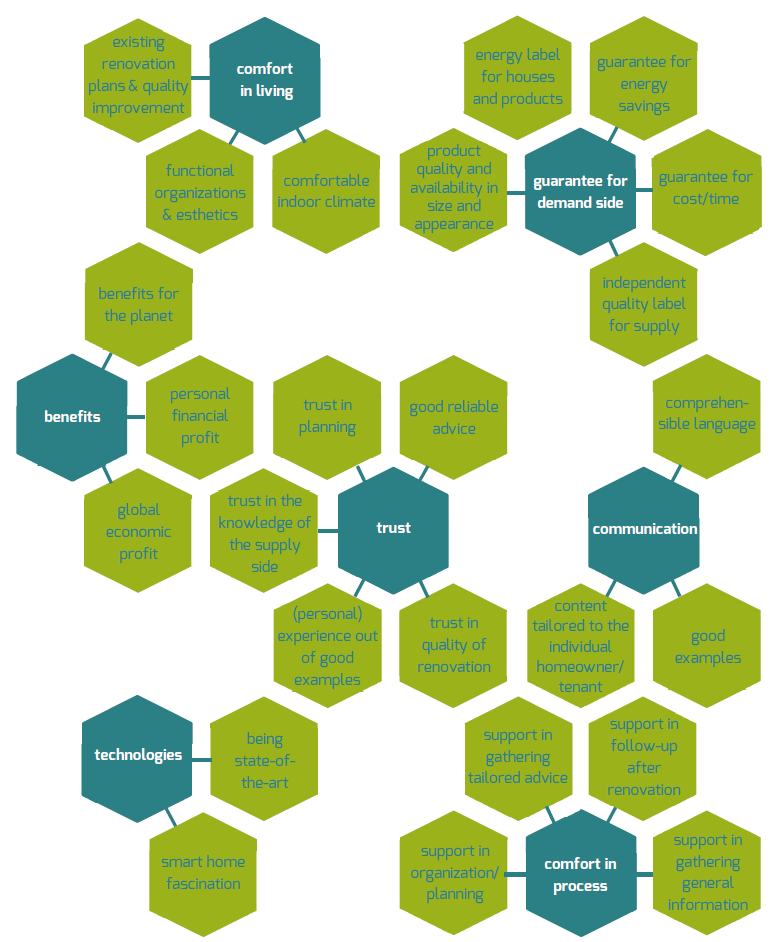Complex interplay of barriers is now mapped
Renovation by the private sector towards increased energy efficiency is seriously lagging behind. As more than sufficient technological solutions are available, focus must be on removing non-technological barriers.
The main barriers in the residential sector relate to fragmentation of the renovation offer, resulting in inefficient or only partial solutions. In addition to financial restrictions and unclear benefits, house-owners do not have a structured way to obtain all the necessary information. One way to solve this is the use of a ‘1-stop-shop concept’. Many have been put in practice. Some were successful, others not. They often lack an understanding of the concerns and demands of homeowners.
The REFURB project focuses on the complex interplay of barriers through coordinated process organization, innovation and optimization. This way the REFURB project will bridge the gap between supply and demand sides. Therefore, WP2 and WP3 of the project are dedicated to analyze demand and supply-side drivers.
WP3 (‘supply side mapping’) focuses on the supply side. The supply side involves suppliers of technologies or technological solutions such as insulation and renewable energy solutions, like contractors, architects and other advisors which target the demand side.
In WP 3 the view of the supply side on the demand side and the already known solutions are mapped. These objectives are realized in three different deliverables. Report 3.1 talks about understanding how the supply side perceives the demand drivers and to define the problem of mutual understanding.
Seven general categories of demand-side drivers according to the supply side are determined out of the input of all partners: Comfort in living, Comfort in process, Technologies, Guarantee for supply side, Trust in supply side, Communication and Benefits.
The supply sides’ perception of the drivers of the demand side is very approximate to the real drivers of the demand side. Only the accents are different.
The differences between the real demand-side drivers and what the supply side thinks about the demand-side drivers does not really seem a big problem anymore, probably because the supply side is already looking for ways to encourage homeowners to use their products and services. The supply side seems to appeal more and more to the comfort and trust of homeowners, rather than to the technical side of their offer.
The demand-side drivers and barriers missing in the perception of the supply side, could be seen as ways to organise the demand side or solutions for the supply side, that are covered in the following tasks of WP2 (demand side) and WP3 (supply side).
So, the problem of mutual understanding between demand side and supply side does not seem a huge problem, except for some nuances.
It is probably the way the supply side appeals to the drivers of homeowners to renovate to nZEB that needs some adjustment. The REFURB project supposes there is still lots of improvement possible in the organisation, training and communication of the supply side to better fit the demand side’s needs and triggers. This will be investigated in the next reports for work package 3. In report D3.2 insight will be gained into existing renovation solutions that are already on the market or very close to market introduction. Finally, in report D3.3 an approach to increase the involvement and organization of the supply side will be developed.
However, the report for D3.1 is the result of a small research in the EU countries concerned. This study does not take into account all players in the market. It is a possible approach, but some more and deeper studies are necessary to take grounded overall conclusions.







